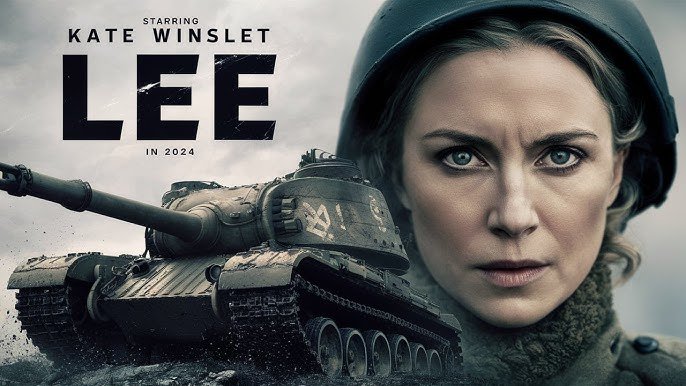
Lee
Elizabeth “Lee” Miller (Kate Winslet), a former American model who became a photographer meets her future husband Roland Penrose (Alexander Skarsgård) through her intellectual friends. She grew argumentative right from the start. In just a few sentences, Lee breaks down his attempts at appearing less bourgeoise than he is. Roland responds with an equal reading of her tough exterior. But their polite quarreling doesn’t turn them off, it’s what sparks their love.
It’s an early scene in “Lee,” a mostly conventional biopic from cinematographer-turned-director Ellen Kuras, and it sets up Lee’s abrasively magnetic personality, as well as gives us our first glimpse at the ferocious range Winslet has conjured to play her.
Kuras’ film based on Antony Penrose’s book “The Lives of Lee Miller” uses an interview with a young writer (Josh O’Connor) as its framing device. “What do I get in return?” asks the elderly Lee of the man interrogating her about this chaotically remarkable life she lived. As she tells him begrudgingly recounting misadventure after misadventure across Europe, where she stumbled into one history defining moment after another with her camera the interviewer becomes visibly moved by her story. Alexandre Desplat’s score helps build both poignancy and propulsion (especially on the battlefield) to hold as much of who Lee was as possible.
But shortly after World War II ends, Lee lands at British Vogue. At first, her eye for capturing people finds purpose in portraits of women participating in the war effort at home. But that is not where her interest lies, it lies at the front lines, where women are not allowed. So she fights to go there and manages to travel with American troops documenting armed conflicts with her camera along the way. Crafting impeccable if not particularly moving images, cinematographer Pawel Edelman (“The Pianist”) gives “Lee” the kind of glossy grittiness expected from prestige Hollywood pictures set at this time. Even in the midst of destruction, there’s a standardly pristine quality to it all.
That Lee was able to be on the ground to photograph the liberation of France and later the abhorrent, unknowable horrors of the Holocaust including images of piles of emaciated bodies outside Nazi concentration camps when nobody knew how many people had died there speaks to her reckless bravado, which Winslet captures here. But her most notorious work involved staging a sick photo of herself inside Hitler’s private bathtub.
The major names that make up this star studded ensemble mostly appear in bit parts. French stars Marion Cotillard and Noémie Merlant each have a brief notable moment on screen as Lee’s friends hiding out in Paris. Andrea Riseborough brings necessary warmth as supportive Vogue editor Audrey Withers while an astutely cast Andy Samberg (the most substantial of the supporting players) takes on Lee’s colleague Time photographer David E. Scherman in his most dramatically earnest role yet.
Lacking formal drive and expectedly grim, “Lee” is also a mediocre cinematic representation of a person’s life. However, the things that Winslet brings to the films (an understandable mix of rebelliousness, fear and hopelessness) are too sincere and emotionally bare for such polished works. Yet it is because the project adheres so strictly to this formulaic approach that her amazing performance as a woman who doesn’t care about conventions becomes so strikingly brilliant. Even at her weakest point in life as an actress Oscar winner shows us vulnerability but never lets us forget about defensiveness which stays with Lee from young years marked by some painful experiences.
They put before Lee various situations she has to deal with during her adventurous journeys around the world while writing books on different subjects like history or geography, these events reflect problems faced by women during wars most vividly seen in single scenes than anywhere else throughout the whole movie. Besides trying hard to show how relevant she still is today among other things like relationship with son or husband’s passive role in developing camouflage techniques for war effort etc., given its size and range “lee” fails to focus on any particular aspect about her.
In one of late chapters catharsis comes over our heroine when it hits her suddenly that people might not understand what happened because they were unable see it themselves written down somewhere thus reacting impetuously on pages of book this represents best statement made by film regarding historical value attached to works done by fictional character created here called Lee Miller, likewise such outburst serves as another opportunity for Kate Winslet do justice performing angry roles where she excels greatly too often.
For More Movies Visit Putlocker.